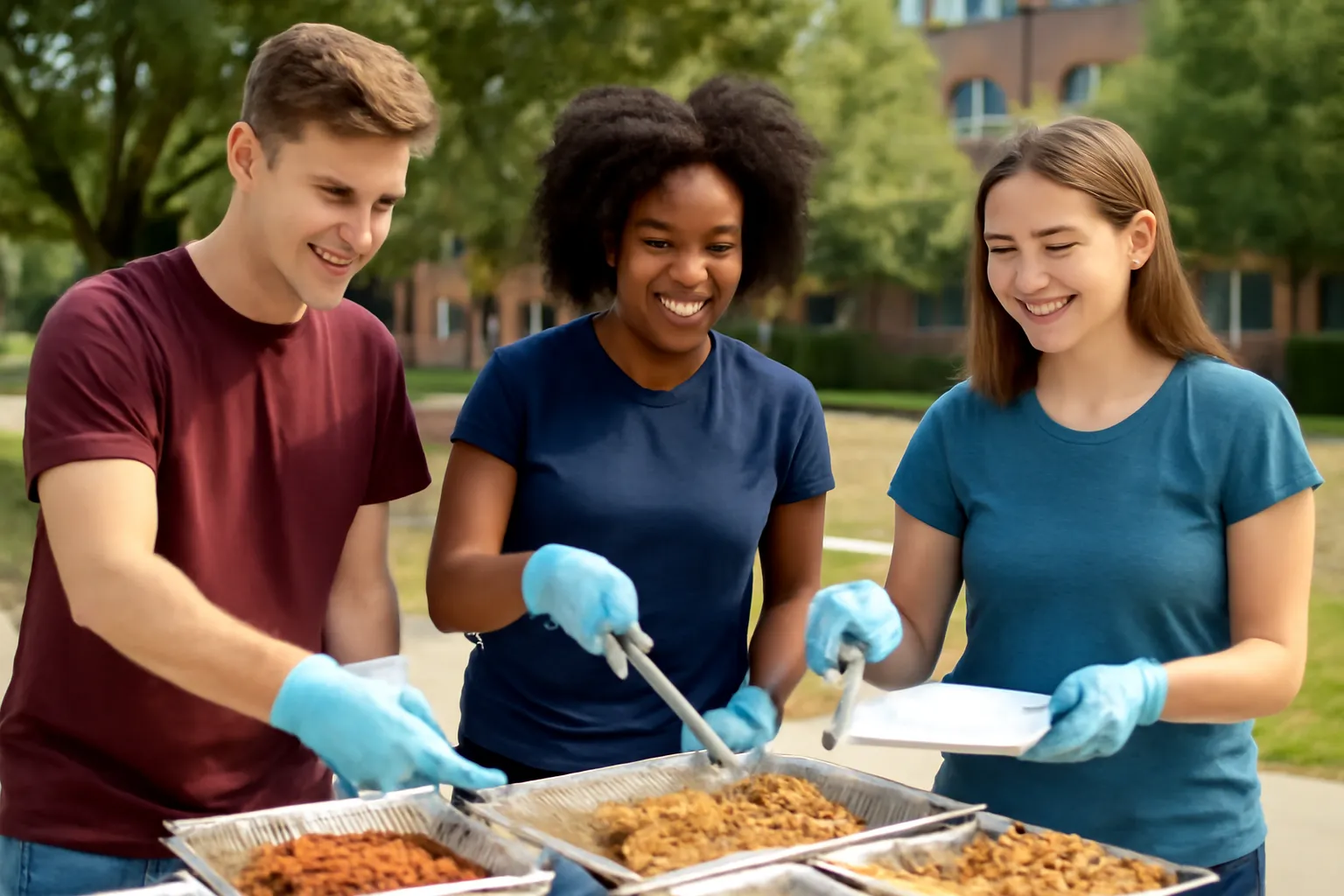Are high school students really obligated to volunteer? Discover how volunteer activities can shape their futures, fulfill obligations, and offer life-changing experiences.
High school student volunteer obligation is a topic that often stirs debate. While volunteer work is widely considered a beneficial practice for students, its true role in shaping a student’s character and academic life is much deeper. As high school students balance their studies, extracurricular activities, and social lives, the idea of a volunteer requirement can seem overwhelming. However, many see it as a pivotal part of a young person’s growth. In this article, we explore the various aspects of high school volunteer obligations, from recommended activities to the number of required hours.
Recommended for High School Student Volunteer Activities
Volunteer work is often encouraged or even required by high schools. But what makes certain activities more fitting than others for students? Volunteering isn’t just about filling a quota; it’s about finding meaningful experiences that foster personal development.
1. Local Charities and Nonprofits
One of the most rewarding volunteer activities involves working with local charities. Whether helping at a food bank, supporting a homeless shelter, or working with community organizations, these opportunities allow students to directly contribute to the wellbeing of others. Students gain valuable skills like teamwork, problem-solving, and empathy—qualities that will help them in both personal and professional spheres.
2. Mentorship Programs
High school students often find themselves acting as mentors or tutors to younger students, guiding them through their academics or teaching them life skills. This type of volunteer work builds leadership skills, boosts confidence, and fosters a sense of responsibility.
3. Environmental Initiatives
Volunteering for environmental causes, such as tree planting, beach clean-ups, or wildlife preservation, teaches students about sustainability and the importance of taking care of the planet. This not only helps students develop environmental awareness but also teaches the value of working toward long-term, meaningful goals.
4. Hospital or Elderly Care Volunteering
Volunteering in hospitals or elder care facilities exposes students to different generations and challenges them to be compassionate and patient. It’s a great way to understand the importance of healthcare and community support, as well as gain hands-on experience in helping others.
5. Cultural and Educational Events
Participating in local cultural events, such as festivals, museum openings, or educational workshops, is a fantastic way to engage with the community while learning more about history and culture. It also allows students to sharpen their organizational and event planning skills.
Explore More Volunteering Opportunities
High School Student Volunteer Activities
There is often a distinction between the activities students can choose for volunteer service and the expectations placed on them. High schools may set clear requirements for volunteer hours, but how do these activities benefit the students and their communities?
1. Developing Essential Life Skills
Through volunteer work, students learn how to manage their time, communicate effectively, and solve problems. These essential skills are not only beneficial in high school but also in college and beyond. Whether a student is coordinating a food drive or helping organize an event, these experiences equip them with the confidence to handle future challenges.
2. Building a Stronger College Application
Colleges and universities look for students who are well-rounded and engaged with their communities. Volunteering gives students an edge when it comes to college admissions. A consistent record of volunteer work demonstrates commitment, responsibility, and a willingness to contribute to the greater good—qualities that colleges highly value.
3. Boosting Social Responsibility
Volunteering helps high school students develop a stronger sense of social responsibility and community awareness. They begin to recognize the importance of giving back to their communities and the role they play in creating positive change. It also broadens their perspective, teaching them to appreciate different cultures, issues, and ways of life.
4. Emotional and Psychological Benefits
Helping others has been shown to increase happiness and decrease stress levels. Volunteer activities provide students with a sense of accomplishment and self-worth. It offers them the opportunity to make a difference in someone’s life, boosting their confidence and mental wellbeing.
5. Volunteering as a Social Activity
Many volunteer activities involve group work, offering students a chance to interact with others outside of their usual social circles. It’s a great way to form new friendships and network with peers who share similar interests in community service.
Discover More Volunteering Activities
High School Volunteer Duty Time
When it comes to fulfilling volunteer obligations, high school students often find themselves questioning how many hours they are required to commit. While requirements vary, most schools have a set amount of hours needed to graduate or fulfill certain academic criteria.
1. Typical Hour Requirements
The required volunteer hours vary widely across schools, but it’s common for students to be asked to complete anywhere from 20 to 100 hours of volunteer service over the course of their high school careers. The exact amount may depend on the school’s policies or the student’s grade level. Some schools even break down the hours per year or per semester to ensure students complete the requirement in a manageable way.
2. Flexibility in Volunteer Time
Many high schools offer flexibility in when and where students complete their volunteer hours. This flexibility is beneficial for students who have busy schedules or extracurricular activities. Evening and weekend volunteer opportunities are often available to help students fit their service into their schedules.
3. Tracking Volunteer Hours
Most schools require students to track and submit their volunteer hours for approval. This process helps ensure accountability and encourages students to take their service commitment seriously. Students may need to submit a log or get their volunteer supervisor’s signature to verify their hours.
4. How to Meet Your Hours
It can be overwhelming to keep track of hours, but students can break their volunteering down into smaller chunks to make it more manageable. For example, helping for just two hours per week over the course of a year can easily fulfill the 100-hour requirement. Schools may also offer “volunteer fairs” or lists of pre-approved organizations for students to choose from.
5. The Impact of Meeting Volunteer Requirements
Completing the required volunteer hours offers more than just a check on the academic checklist. It fosters a sense of accomplishment and gives students an opportunity to reflect on the personal growth they’ve experienced throughout their service. In some cases, the experience may even spark a lifelong commitment to volunteering.
Learn More About Volunteer Duty Time
In conclusion, high school student volunteer obligation serves as an important tool in shaping the next generation of socially responsible citizens. By engaging in meaningful volunteer activities, students gain life skills, enrich their college applications, and contribute positively to their communities. While the number of hours and types of activities may vary, the personal benefits and experiences that come with fulfilling volunteer requirements are immeasurable. Volunteering provides students with the opportunity to not only help others but also discover more about themselves, ultimately guiding them toward becoming more empathetic, responsible, and active members of society.






